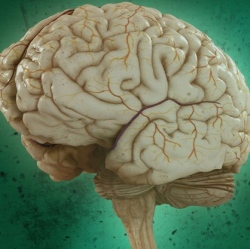
A study reveals that 9 and 10 year-old children who are aerobically fit tend to have significantly thinner gray matter than their “low-fit” peers. Thinning of the outermost layer of brain cells in the cerebrum is associated with better mathematics performance, researchers report in PLOS ONE.
The study suggests, but does not prove, that cardiorespiratory fitness contributes to gray matter thinning, a normal process of child brain development. The study also offers the first evidence that fitness enhances math skills by aiding the development of brain structures that contribute to mathematics achievement.
“Gray-matter loss during child development is part of healthy maturation,” said University of Illinois postdoctoral researcher Laura Chaddock-Heyman, who led the research. “Gray-matter thinning is the sculpting of a fully formed, healthy brain. The theory is that the brain is pruning away unnecessary connections and strengthening useful connections.”
Previous studies have shown that gray-matter thinning is associated with better reasoning and thinking skills, Chaddock-Heyman said. “We show, for the first time, that aerobic fitness may play a role in this cortical thinning,” she said. “In particular, we find that higher-fit 9- and 10-year-olds show a decrease in gray-matter thickness in some areas known to change with development, specifically in the frontal, temporal and occipital lobes of the brain.”
The analysis included 48 children, all of whom had completed a maximal oxygen-uptake fitness test on a treadmill. Half of the children (the higher-fit kids) were at or above the 70th percentile for aerobic fitness, and half (the lower-fit kids) were at or below the 30th percentile. The researchers imaged the children’s brains using fMRI, and tested their math, reading, and spelling skills using the Wide Range Achievement Test-3, which correlates closely with academic achievement in these fields.
The team found differences in math skills and cortical brain structure between the higher-fit and lower-fit children: thinner gray matter corresponded to better math performance in the higher-fit kids. But they did not find significant fitness-associated differences in reading or spelling aptitude.
